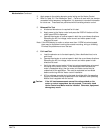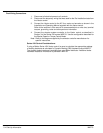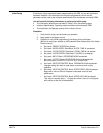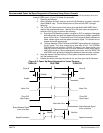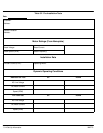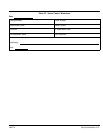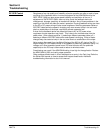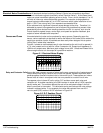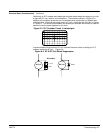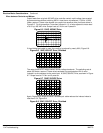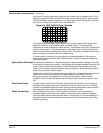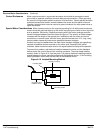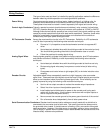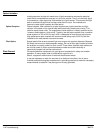
Section 6
Troubleshooting
Troublehsooting 6-1MN770
DC SCR Control Roughness of car ride quality and instability of motor operation are often a result of poor
mounting of the feedback device. Incorrect adjustment of the ARM GAIN and/or the
RATE PROP GAIN can also cause speed instability and oscillation of the car. If
adjustment of RATE PROP GAIN does not help, check the feedback device for
misalignment, slippage, sensitivity to mechanical vibration. Any of these problems in the
coupling or the mount will affect the motor’s operation. Running feedback wiring too close
to the AC or DC power wiring will also cause roughness. Switching parameter tables or
ACC/DEC tables while the speed is changing may also cause a bump in the car travel
due to a recalculation of the slope, required to prevent excessive jerk.
If wires for the feedback device are placed too close to AC or DC power wires,
roughness of motor operation may result. This is due to the induced noise from the
power wires. Other causes could be 1.) selecting a different parameter table or 2.)
selecting a different ACC/DEC table while motor speed is changing. Either of these
changes may also cause a bump in the car travel due to a recalculation of the slope.
Noisy motors often result from insufficient filtering of the 360 Hz AC ripple of the DC
output voltage. An SCR based control is not capable of producing “generator quality” DC
voltages, so a filter assemble (made from a DC-rated inductor and non-polarized
capacitors) on the DC loop is often used to reduce or eliminate noise.
Fuse blowing may result if the ARM GAIN setting is too high for the application. Reduce
the ARM GAIN by 50% and verify proper operation.
Other problems should result in a fault displayed as an entry in the Fault Log. Refer the
the Series 20H manual on how to access and interpret these faults. Additional
troubleshooting information is also in this manual.



